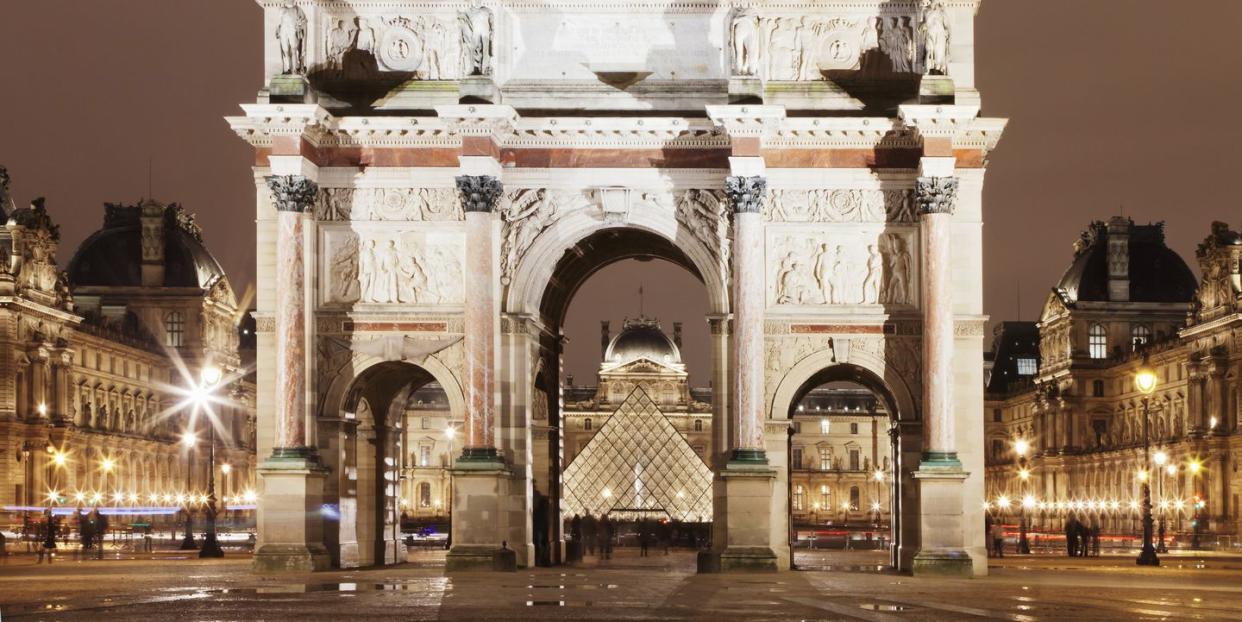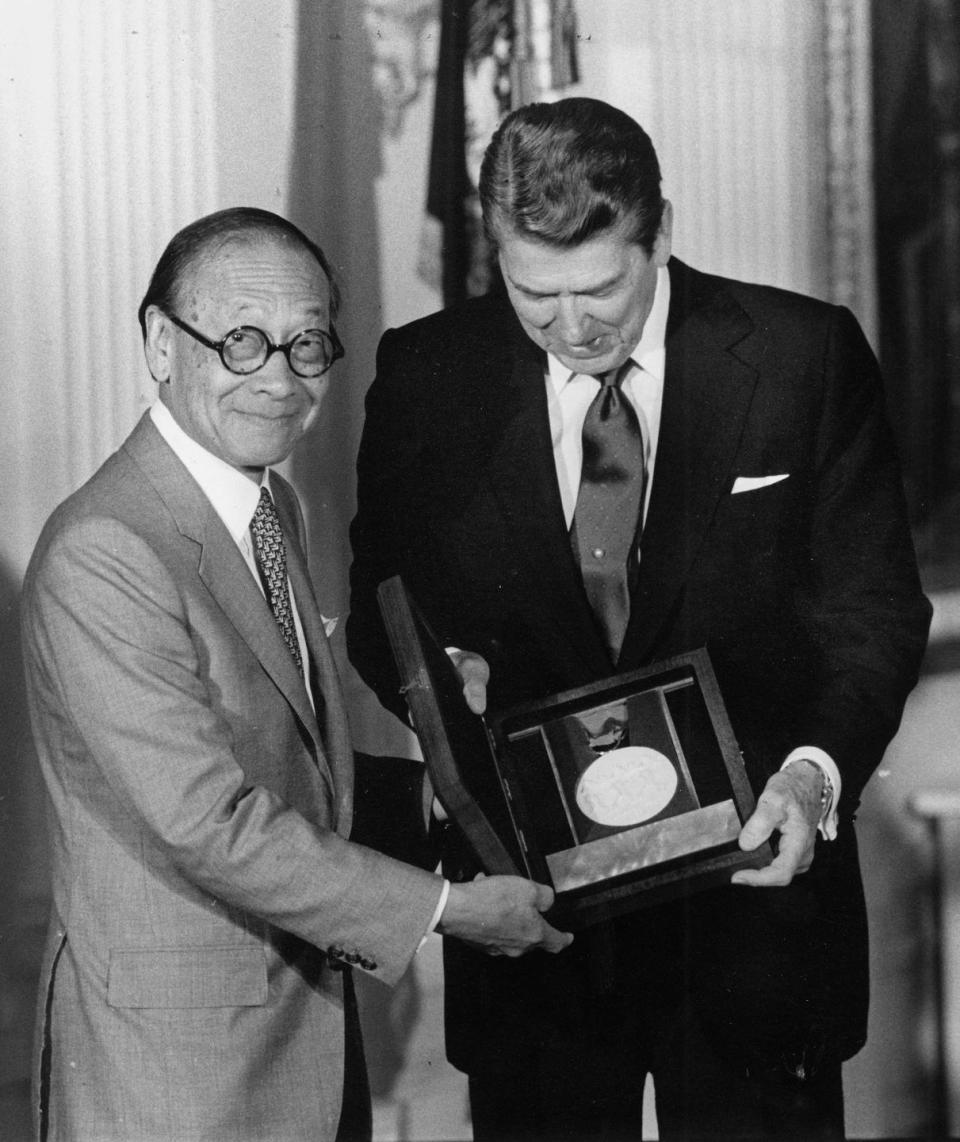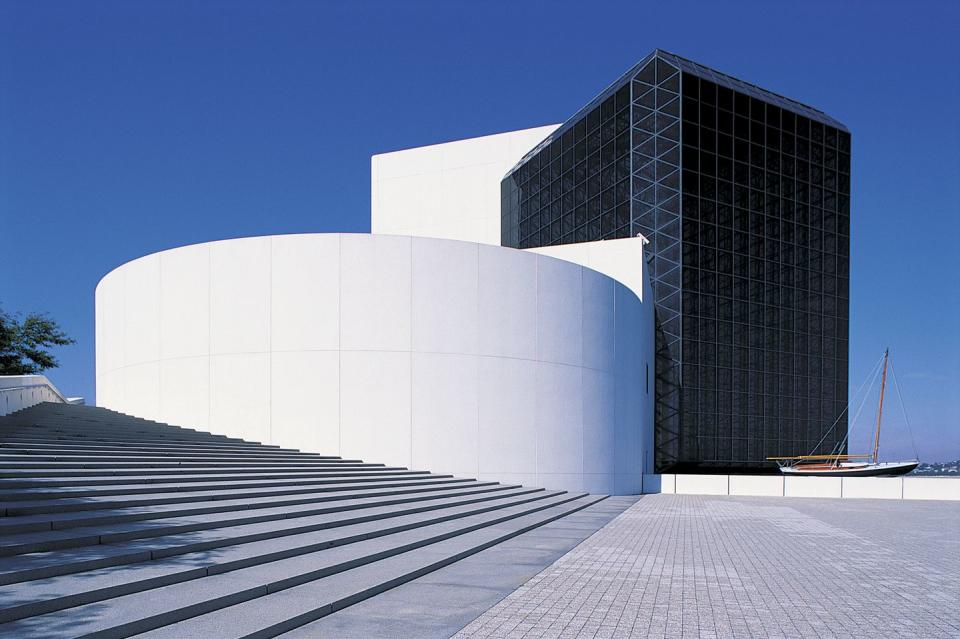Famed Architect Behind the Louvre Pyramid, I.M. Pei, Dies at 102

The architecture world lost an icon yesterday, when Ieoh Ming (I.M.) Pei died in New York after a prolific, decades-long career. Best known for his then-scandalous, now-iconic pyramid outside Paris's Louvre museum, Pei designed numerous boundary-pushing structures around the world. The noted architecture critic Ada Louise Huxtable noted in 1971 that "he may very likely be America’s best architect."
Born in Guangzhou, China, and raised in Hong Kong and Shanghai, Pei traveled to the U.S. at age 17 to enroll in the University of Pennsylvania's architecture school, before transferring to MIT. While the young architect was pursuing a formal education, though, he found himself more interested in modernist movements going on in the world at large than in his studies in Cambridge. When legendary modernist Le Corbusier visited MIT in 1935, Pei remarked that "the two days with Le Corbusier, or 'Corbu' as we used to call him, were probably the most important days in my architectural education."

It comes as little surprise then, that Pei went on to a career of envelope-pushing modern design, devising structures-much like Le Corbusier-that were often controversial in their time but grew to be widely lauded. There's no better proof of that than the Louvre structure, which drew outrage when installed in 1989 and is now a beloved addition to the museum's 12th-century Louvre Palace.

Besides that one project with which he is most often associated, though, the architect created many other architectural masterpieces around the globe, and for a stunningly wide array of uses: the John F. Kennedy library near Boston (which he called "the most important commission of my life"), the Bank of China in Hong Kong, the East building of Washington, D.D.'s National Gallery, New York's Jacob K. Javits convention center, and Cleveland's Rock & Roll Hall of Fame-to name just a few.

Along the way, Pei also racked up some of the most coveted awards in architecture-and in the world in general. He received the Pritzker Prize (architecture's top honor) in 1983 and the Presidential Medal of Freedom in 1992. The variation in his forms, materials, and building types speak to the architect's insatiable curiosity and passionate drive for exploration.
But to many of Pei's friends and colleagues, the architect's warmth and kindness will be remembered in equal measure to his design prowess. "I knew him as a humble man, always smiling," architect Santiago Calatrava, designer the World Trade Center's famous transportation hub, told Architectural Digest.
Follow House Beautiful on Instagram.
('You Might Also Like',)

